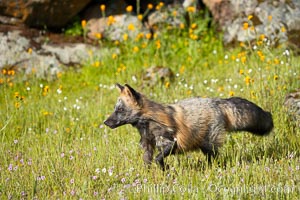
Cross fox, Sierra Nevada foothills, Mariposa, California. The cross fox is a color variation of the red fox.
Species: Red fox, Vulpes vulpes
Image ID: 15958
Species: Red fox, Vulpes vulpes
Image ID: 15958

Cross fox, Sierra Nevada foothills, Mariposa, California. The cross fox is a color variation of the red fox.
Species: Red fox, Vulpes vulpes
Image ID: 15959
Species: Red fox, Vulpes vulpes
Image ID: 15959
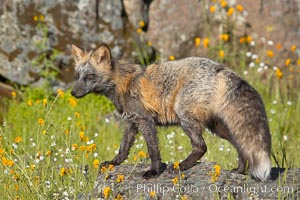
Cross fox, Sierra Nevada foothills, Mariposa, California. The cross fox is a color variation of the red fox.
Species: Red fox, Vulpes vulpes
Image ID: 15961
Species: Red fox, Vulpes vulpes
Image ID: 15961
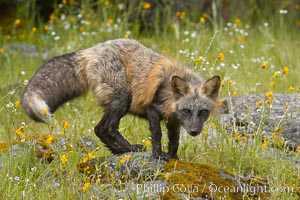
Cross fox, Sierra Nevada foothills, Mariposa, California. The cross fox is a color variation of the red fox.
Species: Red fox, Vulpes vulpes
Image ID: 15962
Species: Red fox, Vulpes vulpes
Image ID: 15962
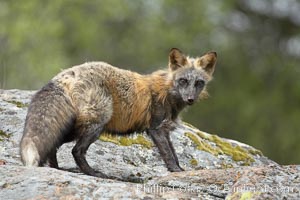
Cross fox, Sierra Nevada foothills, Mariposa, California. The cross fox is a color variation of the red fox.
Species: Red fox, Vulpes vulpes
Image ID: 15955
Species: Red fox, Vulpes vulpes
Image ID: 15955
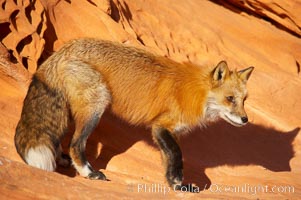
Red fox. Red foxes are the most widely distributed wild carnivores in the world. Red foxes utilize a wide range of habitats including forest, tundra, prairie, and farmland. They prefer habitats with a diversity of vegetation types and are increasingly encountered in suburban areas.
Species: Red fox, Vulpes vulpes
Image ID: 12069
Species: Red fox, Vulpes vulpes
Image ID: 12069
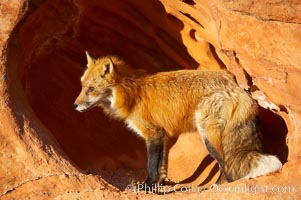
Red fox. Red foxes are the most widely distributed wild carnivores in the world. Red foxes utilize a wide range of habitats including forest, tundra, prairie, and farmland. They prefer habitats with a diversity of vegetation types and are increasingly encountered in suburban areas.
Species: Red fox, Vulpes vulpes
Image ID: 12070
Species: Red fox, Vulpes vulpes
Image ID: 12070
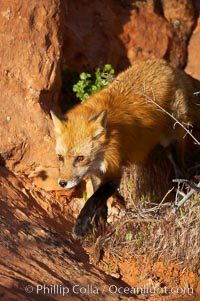
Red fox. Red foxes are the most widely distributed wild carnivores in the world. Red foxes utilize a wide range of habitats including forest, tundra, prairie, and farmland. They prefer habitats with a diversity of vegetation types and are increasingly encountered in suburban areas.
Species: Red fox, Vulpes vulpes
Image ID: 12071
Species: Red fox, Vulpes vulpes
Image ID: 12071
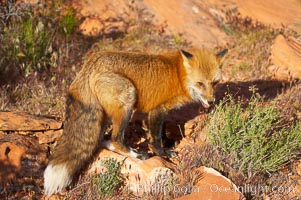
Red fox. Red foxes are the most widely distributed wild carnivores in the world. Red foxes utilize a wide range of habitats including forest, tundra, prairie, and farmland. They prefer habitats with a diversity of vegetation types and are increasingly encountered in suburban areas.
Species: Red fox, Vulpes vulpes
Image ID: 12072
Species: Red fox, Vulpes vulpes
Image ID: 12072
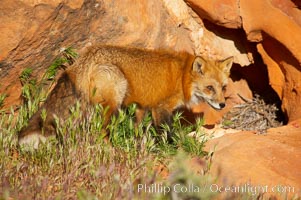
Red fox. Red foxes are the most widely distributed wild carnivores in the world. Red foxes utilize a wide range of habitats including forest, tundra, prairie, and farmland. They prefer habitats with a diversity of vegetation types and are increasingly encountered in suburban areas.
Species: Red fox, Vulpes vulpes
Image ID: 12073
Species: Red fox, Vulpes vulpes
Image ID: 12073

Red fox. Red foxes are the most widely distributed wild carnivores in the world. Red foxes utilize a wide range of habitats including forest, tundra, prairie, and farmland. They prefer habitats with a diversity of vegetation types and are increasingly encountered in suburban areas.
Species: Red fox, Vulpes vulpes
Image ID: 12074
Species: Red fox, Vulpes vulpes
Image ID: 12074
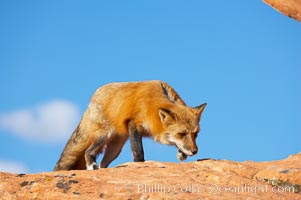
Red fox. Red foxes are the most widely distributed wild carnivores in the world. Red foxes utilize a wide range of habitats including forest, tundra, prairie, and farmland. They prefer habitats with a diversity of vegetation types and are increasingly encountered in suburban areas.
Species: Red fox, Vulpes vulpes
Image ID: 12075
Species: Red fox, Vulpes vulpes
Image ID: 12075
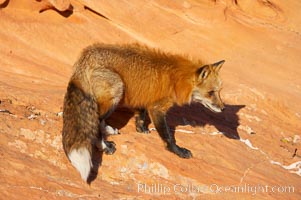
Red fox. Red foxes are the most widely distributed wild carnivores in the world. Red foxes utilize a wide range of habitats including forest, tundra, prairie, and farmland. They prefer habitats with a diversity of vegetation types and are increasingly encountered in suburban areas.
Species: Red fox, Vulpes vulpes
Image ID: 12076
Species: Red fox, Vulpes vulpes
Image ID: 12076

Red fox. Red foxes are the most widely distributed wild carnivores in the world. Red foxes utilize a wide range of habitats including forest, tundra, prairie, and farmland. They prefer habitats with a diversity of vegetation types and are increasingly encountered in suburban areas.
Species: Red fox, Vulpes vulpes
Image ID: 12077
Species: Red fox, Vulpes vulpes
Image ID: 12077
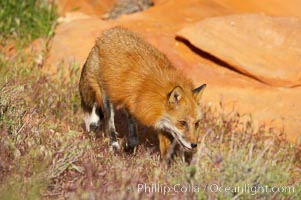
Red fox. Red foxes are the most widely distributed wild carnivores in the world. Red foxes utilize a wide range of habitats including forest, tundra, prairie, and farmland. They prefer habitats with a diversity of vegetation types and are increasingly encountered in suburban areas.
Species: Red fox, Vulpes vulpes
Image ID: 12078
Species: Red fox, Vulpes vulpes
Image ID: 12078
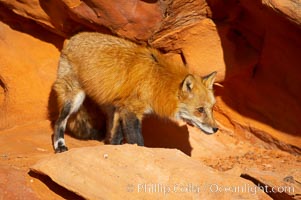
Red fox. Red foxes are the most widely distributed wild carnivores in the world. Red foxes utilize a wide range of habitats including forest, tundra, prairie, and farmland. They prefer habitats with a diversity of vegetation types and are increasingly encountered in suburban areas.
Species: Red fox, Vulpes vulpes
Image ID: 12079
Species: Red fox, Vulpes vulpes
Image ID: 12079
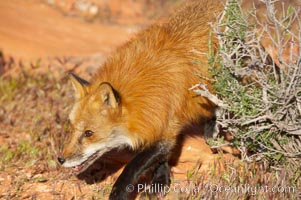
Red fox. Red foxes are the most widely distributed wild carnivores in the world. Red foxes utilize a wide range of habitats including forest, tundra, prairie, and farmland. They prefer habitats with a diversity of vegetation types and are increasingly encountered in suburban areas.
Species: Red fox, Vulpes vulpes
Image ID: 12080
Species: Red fox, Vulpes vulpes
Image ID: 12080
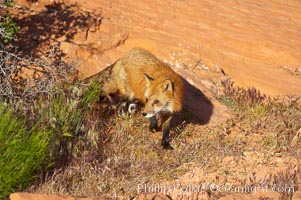
Red fox. Red foxes are the most widely distributed wild carnivores in the world. Red foxes utilize a wide range of habitats including forest, tundra, prairie, and farmland. They prefer habitats with a diversity of vegetation types and are increasingly encountered in suburban areas.
Species: Red fox, Vulpes vulpes
Image ID: 12081
Species: Red fox, Vulpes vulpes
Image ID: 12081
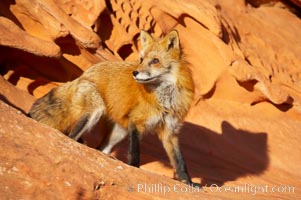
Red fox. Red foxes are the most widely distributed wild carnivores in the world. Red foxes utilize a wide range of habitats including forest, tundra, prairie, and farmland. They prefer habitats with a diversity of vegetation types and are increasingly encountered in suburban areas.
Species: Red fox, Vulpes vulpes
Image ID: 12082
Species: Red fox, Vulpes vulpes
Image ID: 12082

Red fox. Red foxes are the most widely distributed wild carnivores in the world. Red foxes utilize a wide range of habitats including forest, tundra, prairie, and farmland. They prefer habitats with a diversity of vegetation types and are increasingly encountered in suburban areas.
Species: Red fox, Vulpes vulpes
Image ID: 12083
Species: Red fox, Vulpes vulpes
Image ID: 12083

Red fox. Red foxes are the most widely distributed wild carnivores in the world. Red foxes utilize a wide range of habitats including forest, tundra, prairie, and farmland. They prefer habitats with a diversity of vegetation types and are increasingly encountered in suburban areas.
Species: Red fox, Vulpes vulpes
Image ID: 12084
Species: Red fox, Vulpes vulpes
Image ID: 12084
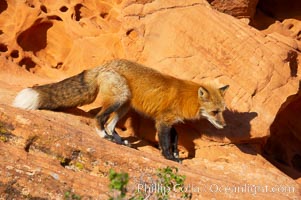
Red fox. Red foxes are the most widely distributed wild carnivores in the world. Red foxes utilize a wide range of habitats including forest, tundra, prairie, and farmland. They prefer habitats with a diversity of vegetation types and are increasingly encountered in suburban areas.
Species: Red fox, Vulpes vulpes
Image ID: 12085
Species: Red fox, Vulpes vulpes
Image ID: 12085
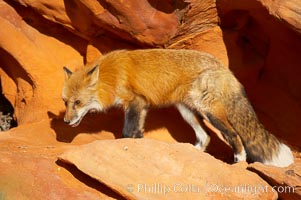
Red fox. Red foxes are the most widely distributed wild carnivores in the world. Red foxes utilize a wide range of habitats including forest, tundra, prairie, and farmland. They prefer habitats with a diversity of vegetation types and are increasingly encountered in suburban areas.
Species: Red fox, Vulpes vulpes
Image ID: 12086
Species: Red fox, Vulpes vulpes
Image ID: 12086

Red fox. Red foxes are the most widely distributed wild carnivores in the world. Red foxes utilize a wide range of habitats including forest, tundra, prairie, and farmland. They prefer habitats with a diversity of vegetation types and are increasingly encountered in suburban areas.
Species: Red fox, Vulpes vulpes
Image ID: 12087
Species: Red fox, Vulpes vulpes
Image ID: 12087

Gray fox. Gray foxes are found in deciduous woodlands, but are occasionally seen in old fields foraging for fruits and insects. Gray foxes resemble small, gracile dogs with bushy tails. They are distinguished from most other canids by their grizzled upperparts, buff neck and black-tipped tail.
Species: Gray fox, Urocyon cinereoargenteus
Image ID: 12088
Species: Gray fox, Urocyon cinereoargenteus
Image ID: 12088
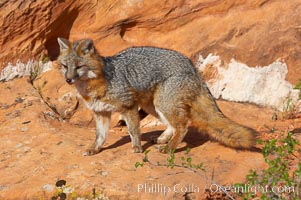
Gray fox. Gray foxes are found in deciduous woodlands, but are occasionally seen in old fields foraging for fruits and insects. Gray foxes resemble small, gracile dogs with bushy tails. They are distinguished from most other canids by their grizzled upperparts, buff neck and black-tipped tail.
Species: Gray fox, Urocyon cinereoargenteus
Image ID: 12089
Species: Gray fox, Urocyon cinereoargenteus
Image ID: 12089
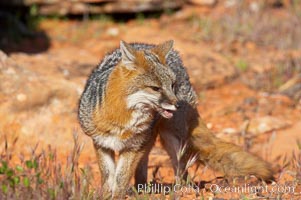
Gray fox. Gray foxes are found in deciduous woodlands, but are occasionally seen in old fields foraging for fruits and insects. Gray foxes resemble small, gracile dogs with bushy tails. They are distinguished from most other canids by their grizzled upperparts, buff neck and black-tipped tail.
Species: Gray fox, Urocyon cinereoargenteus
Image ID: 12090
Species: Gray fox, Urocyon cinereoargenteus
Image ID: 12090
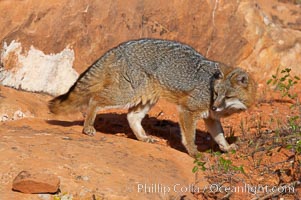
Gray fox. Gray foxes are found in deciduous woodlands, but are occasionally seen in old fields foraging for fruits and insects. Gray foxes resemble small, gracile dogs with bushy tails. They are distinguished from most other canids by their grizzled upperparts, buff neck and black-tipped tail.
Species: Gray fox, Urocyon cinereoargenteus
Image ID: 12091
Species: Gray fox, Urocyon cinereoargenteus
Image ID: 12091
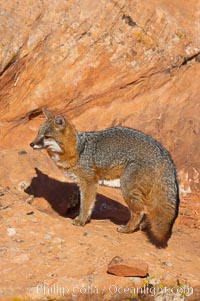
Gray fox. Gray foxes are found in deciduous woodlands, but are occasionally seen in old fields foraging for fruits and insects. Gray foxes resemble small, gracile dogs with bushy tails. They are distinguished from most other canids by their grizzled upperparts, buff neck and black-tipped tail.
Species: Gray fox, Urocyon cinereoargenteus
Image ID: 12092
Species: Gray fox, Urocyon cinereoargenteus
Image ID: 12092
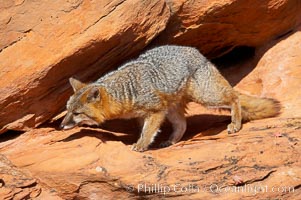
Gray fox. Gray foxes are found in deciduous woodlands, but are occasionally seen in old fields foraging for fruits and insects. Gray foxes resemble small, gracile dogs with bushy tails. They are distinguished from most other canids by their grizzled upperparts, buff neck and black-tipped tail.
Species: Gray fox, Urocyon cinereoargenteus
Image ID: 12093
Species: Gray fox, Urocyon cinereoargenteus
Image ID: 12093